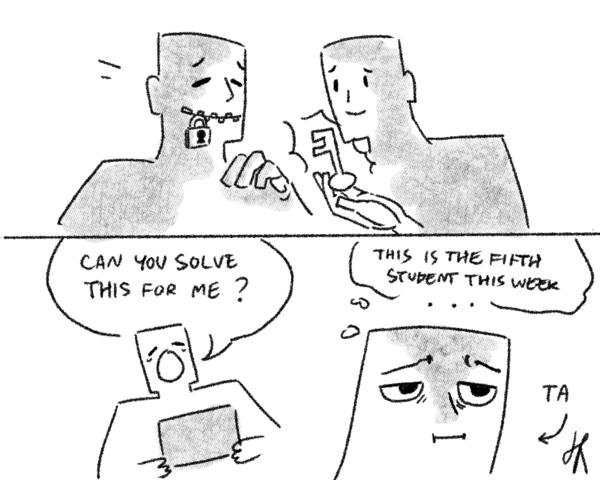Everyone is encouraged to ask questions. While most classes in KAIST are in English, the professors or teaching assistants (TAs) in charge of the class might not speak English as fluently. There is bound to be information about lectures and assignments that is figuratively and literally lost in translation. Asking questions for clarification in these situations is helpful for the students and teaching staff. Professors and TAs can fix such problems and prevent them from happening again in future lectures and courses. These questions can also help other students be aware of their mistakes, saving them from unnecessary hassle. This creates an effective learning environment for everyone.
However, it is rare to see students asking questions in class. Many students worry that others will judge them based on the questions they ask. They worry if the question is something that has already been covered and is thus unnecessary. They fret about the unwanted attention that the question may attract toward them. With online classes due to COVID-19 and the revamp of KLMS’s question board, people can ask questions anonymously. There definitely has been an increase in the number of questions with online classes and thankfully, the participation remains the same even with the return to offline classes, at least on online platforms. Everything looks perfect, except that some questions do not seem “right”.
Speaking from my experiences as a once fellow student and now a TA for lower-level computer science courses such as Introduction to Programming (CS101) and Data Structures (CS206), it is very common to see questions along the lines of, “I don’t know, solve it for me.” Students might phrase this same question as, “I don’t know what is wrong with my code,” “I don’t know how to implement it,” or “Can you check if anything is wrong with my code?” Now, these are not questions. This is just being lazy.

This laziness helps no one. It wastes the time of the person answering such questions and does not contribute in any way to the learning of those who ask them. When asked such questions, TAs don’t have any clue where to start. From a one-step solution of answering the question, TAs have to first figure out the details and problems for the student and then answer the question: a complete waste of time that could have been used to assist another student. Furthermore, with no critical thinking involved, the student learns nothing. If they encounter another similar obstacle, they’ll resort to the previous method of asking the same meaningless questions.
Maybe the student is really having trouble, lost without a single clue because they are coding for the first time, but this is not an excuse for not trying to solve the problem on their own. The confusion might arise because of the wording of the assignment, because of details that students might need to be made aware of, or because of a small mistake in the code that causes errors. No matter the reason, KAIST students are competent enough to at least narrow down the question to “I don’t understand what the question is asking,” “I want to be able to do (feature), but I don’t know if there is an easy way,” or “I don’t know why there is an error in this line.” Although they are not significantly better, the extra details give TAs a hint about what causes trouble for the student.
Thankfully, these questions appear less in more advanced courses. Perhaps, the students who asked these questions didn’t learn much from earlier courses and were discouraged from pursuing computer science soon after. But changing majors won’t solve laziness. Regardless of their chosen major, one should maintain the right attitude towards learning and problem-solving. Identifying the issue and asking the right questions that would lead you to the solution are simple critical thinking skills crucial for everyday problem-solving. Avoiding so postpones the inevitable. There will be a time in life when your problem-solving abilities are tested. So, for now, everyone is encouraged to ask questions, as long as they’re not lazy.

